reality through the arts 8th edition pdf free
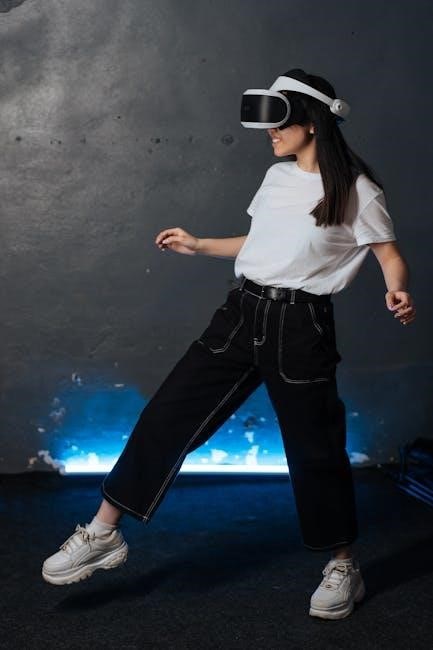
Reality Through the Arts explores the humanities through a thematic and chronological lens, covering art forms like painting, music, and literature across global regions.
1.1 Overview of the Book
Reality Through the Arts provides a comprehensive exploration of the humanities, blending thematic and chronological approaches. It covers diverse art forms, including painting, sculpture, music, literature, and film, while focusing on global regions like Africa, Asia, Europe, and the Americas. The 8th edition enhances coverage of contemporary arts and integrates digital media, offering a flexible structure for learners. This edition also introduces MySearchLab, an interactive e-text platform designed to enrich student engagement and understanding of artistic expressions across cultures and time.
1.2 Importance of the 8th Edition
The 8th edition of Reality Through the Arts stands out for its enhanced coverage of contemporary arts and integration of digital media, making it a valuable resource for modern learners. It offers improved pedagogical tools, such as MySearchLab, which supports interactive learning and research. This edition’s updated content and flexible structure ensure a deeper understanding of diverse artistic traditions, catering to both students and educators seeking a comprehensive and engaging approach to the humanities.
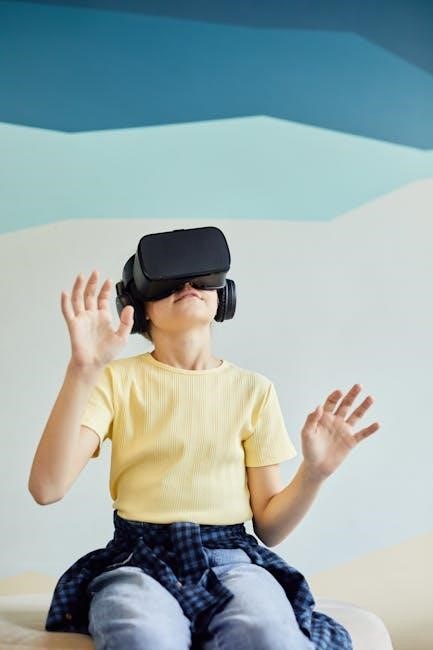
Structure of the Book
Reality Through the Arts is organized thematically and chronologically, exploring art forms like painting, sculpture, and music, while connecting global artistic expressions across time and regions.
2.1 Thematic and Chronological Approach
Reality Through the Arts combines a thematic and chronological structure, exploring art forms like painting, sculpture, and music while tracing their historical development. It organizes content by themes such as 2D media, architecture, and literature, then examines their evolution over time. This dual approach allows readers to understand artistic movements within their cultural and historical contexts, making it easier to connect global artistic expressions across regions like Africa, Asia, Europe, and the Americas.
2.2 Key Sections: Media of the Arts
The Media of the Arts section provides in-depth coverage of various art forms, including 2D media, sculpture, architecture, music, literature, theatre, film, and dance. Each chapter explores the unique characteristics, historical development, and cultural significance of these mediums. Readers gain insights into how artworks are composed and the emotional responses they evoke. This comprehensive approach helps students understand the interconnectedness of different art forms and their roles in shaping human experiences across time and regions.
2.3 Regional Focus: Africa, Americas, Asia, Europe, and the Middle East
The book dedicates extensive coverage to the art styles and cultural expressions of Africa, the Americas, Asia, Europe, and the Middle East. Each region’s unique artistic traditions, historical contexts, and contemporary influences are explored in detail. This regional focus allows readers to appreciate the diversity of global art forms, from ancient African sculptures to modern Asian digital media. The text also highlights how regional identities shape artistic practices, fostering a deeper understanding of cultural heritage and its evolution over time.
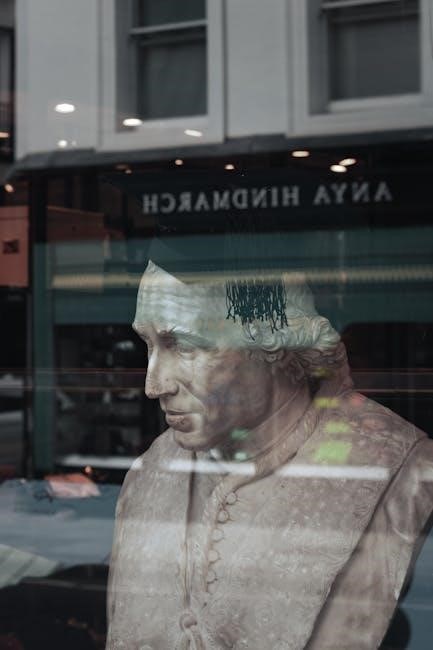
Accessing “Reality Through the Arts 8th Edition PDF Free”
Access the 8th edition PDF through educational platforms, libraries, or authorized sources. Ensure safe downloads by avoiding unverified sites to protect your device and data.
3.1 Sources for Free PDF Downloads
Several platforms offer free access to Reality Through the Arts 8th Edition PDF. Websites like Libgen, Yumpu, and educational repositories provide downloadable versions. Additionally, some academic forums and communities share free PDFs for educational purposes. Be cautious of unverified sites to avoid malware. Always verify the source’s reliability before downloading; Many universities and libraries also offer free access to this textbook through their online databases. Ensure compliance with copyright laws when accessing free materials for academic use.
3.2 How to Download the PDF Safely
To safely download the Reality Through the Arts 8th Edition PDF, use reputable platforms like Libgen or Yumpu. Avoid unverified sites to prevent malware risks. Ensure your device has updated antivirus software before downloading. Additionally, verify the file format and size to confirm authenticity. Always check for copyright compliance and consider using institutional access through libraries or universities. These steps minimize risks and ensure a secure downloading process for academic purposes.
3.3 Legal Considerations for Free Downloads
Downloading Reality Through the Arts 8th Edition PDF for free may infringe on copyright laws. Always verify the legality of the source and respect intellectual property rights. Many academic publishers, including Pearson, enforce strict copyright policies. Institutional access through libraries or universities is a legal alternative. Ensure compliance with local laws and consider purchasing the book for legitimate use. Free downloads from unverified sites may violate terms of service and expose you to legal risks. Always prioritize ethical and lawful access to educational materials.
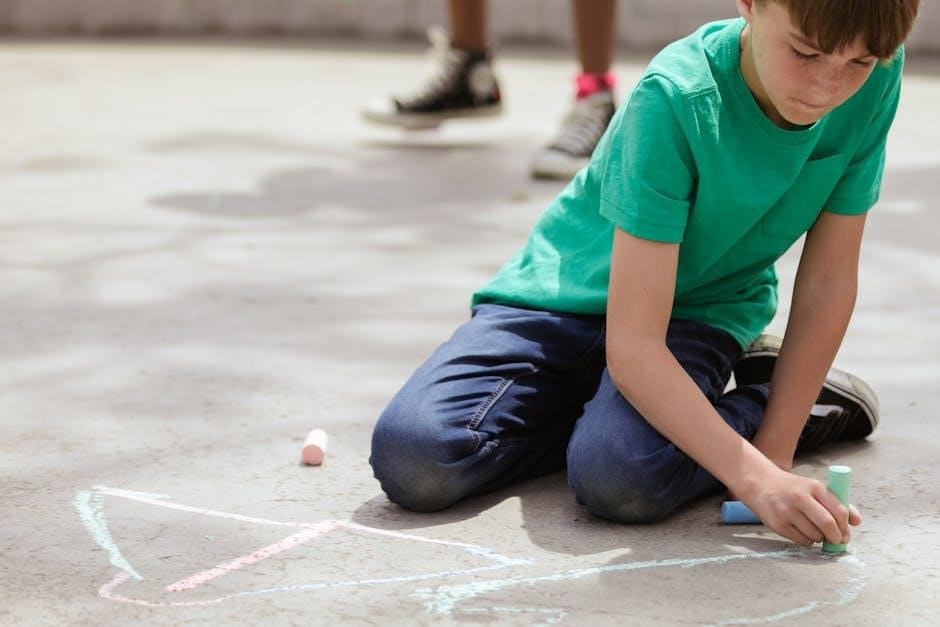
Main Features of the 8th Edition
The 8th edition enhances coverage of contemporary arts, integrates digital media, and improves pedagogical tools, offering a comprehensive exploration of humanities through diverse art forms and historical contexts.
4.1 Enhanced Coverage of Contemporary Arts
The 8th edition emphasizes modern artistic expressions, featuring digital media and global perspectives. It explores contemporary art forms, including digital installations and multimedia works, reflecting current cultural trends. This enhanced focus bridges traditional and modern art, offering insights into diverse voices and innovative techniques. The inclusion of contemporary art fosters a deeper understanding of global influences and the evolving nature of creative expression, making it a valuable resource for students and educators alike.
4.2 Integration of Digital Media and Technology
The 8th edition seamlessly integrates digital media, offering interactive tools and online resources. MySearchLab, an innovative platform, provides multimedia content, enabling students to engage with art digitally. This integration enhances learning by connecting traditional art forms with modern technology, making complex concepts accessible. Digital resources include virtual galleries, audio clips, and videos, fostering a dynamic and immersive educational experience that caters to diverse learning styles and promotes deeper understanding of artistic elements and historical contexts.
4.3 Improved Pedagogical Tools for Better Understanding
The 8th edition features enhanced pedagogical tools designed to enrich the learning experience. These include chapter summaries, key term definitions, and critical thinking exercises that reinforce concepts. The integration of MySearchLab further supports students with interactive activities and personalized study plans. Additionally, the textbook offers a balanced structure that aligns with various teaching methods, ensuring that both students and educators can effectively navigate and engage with the material for a comprehensive understanding of the arts.

Educational Resources and Supplements
Access MySearchLab, an interactive e-text platform, and utilize instructor resources, study guides, and both Student and Teacher Editions for enhanced learning experiences.
5.1 MySearchLab: An Interactive E-Text Platform
MySearchLab is a dynamic online resource designed to enhance learning experiences. It features an interactive e-text, assessment tools, and research assistance. Students can access study guides, practice quizzes, and multimedia content to deepen their understanding of the humanities. The platform fosters critical thinking and personalized learning, allowing users to engage with the material in a flexible and meaningful way. It seamlessly integrates with the Reality Through the Arts 8th Edition, making it an invaluable supplement for both students and educators.
5.2 Instructor Resources and Study Guides
Instructor resources for Reality Through the Arts 8th Edition include comprehensive study guides, lesson plans, and assessment tools. These resources help educators create engaging lectures and assignments, ensuring a structured approach to teaching the humanities. The study guides provide detailed chapter summaries, discussion prompts, and activities that align with the book’s content. Additionally, instructors can access digital tools to track student progress and facilitate interactive classroom discussions, enhancing overall teaching effectiveness and student learning outcomes.
5.3 Student Edition and Teacher Edition
Reality Through the Arts 8th Edition offers both Student and Teacher Editions, available in print and digital formats. The Student Edition is designed for grades 6–12, providing engaging content tailored to young learners. The Teacher Edition includes additional resources such as lesson plans, assessment tools, and activity ideas to support instructional strategies. Both editions align with curriculum standards, ensuring comprehensive coverage of the humanities and arts education for students and educators alike.
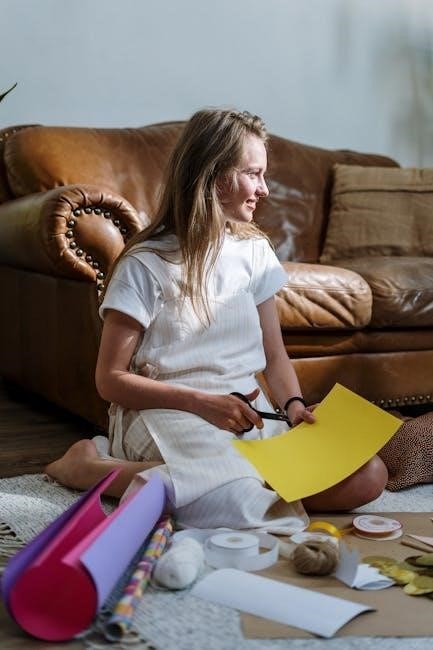
How to Use the Book Effectively
Navigate thematic sections, engage with art styles, and use digital resources for deeper understanding. Apply critical thinking skills to analyze historical contexts and contemporary influences in the arts.
6.1 Navigating the Thematic Sections
Navigating the thematic sections of “Reality Through the Arts” involves exploring art forms chronologically and thematically. The book is divided into key sections, such as 2D media, sculpture, architecture, music, and literature, allowing readers to focus on specific art forms. Regional sections highlight styles from Africa, the Americas, Asia, Europe, and the Middle East. Each chapter is designed to guide readers through historical contexts and contemporary influences, encouraging a deeper understanding of cultural and artistic developments.
6.2 Engaging with Art Styles and Historical Contexts
Engaging with art styles and historical contexts in “Reality Through the Arts” involves exploring how artistic movements reflect cultural and temporal influences. The book organizes art forms chronologically, allowing readers to trace the evolution of styles from ancient to contemporary periods. Each chapter connects artworks to their historical backdrop, enabling students to understand the social, political, and religious factors shaping artistic expression. This approach fosters a deeper appreciation of how art styles emerge and transform over time, enriching the learning experience.
6.3 Applying Critical Thinking Skills
Critical thinking skills are essential for analyzing and interpreting the diverse range of artworks and historical contexts presented in “Reality Through the Arts.” The book encourages students to question, compare, and evaluate artistic styles, themes, and cultural influences. Through structured exercises and thought-provoking questions, learners develop the ability to connect ideas across time and regions, fostering a deeper understanding of the humanities. This approach enhances analytical reasoning and prepares students to engage meaningfully with art in both academic and real-world contexts.
The Role of the Arts in Education
The arts play a vital role in education by fostering creativity, critical thinking, and cultural awareness. They provide students with a global perspective, enriching their understanding of diverse traditions and historical contexts while promoting interdisciplinary learning and personal growth.

7.1 Promoting Creativity and Critical Thinking
The arts foster creativity and critical thinking by encouraging students to explore diverse perspectives and express ideas through various mediums. Reality Through the Arts engages learners by presenting historical and cultural contexts, prompting deeper analysis and interpretation. This approach helps students develop innovative thinking and problem-solving skills, essential for academic and personal growth. By integrating visual, auditory, and performative arts, the book enriches learning experiences, making complex concepts accessible and fostering a lifelong appreciation for creative expression.
7.2 Interdisciplinary Connections in Learning
Reality Through the Arts bridges disciplines by connecting artistic expression to history, culture, and society. Students explore how art reflects and shapes global perspectives, linking creativity to historical events, scientific advancements, and literary movements. This interdisciplinary approach fosters a holistic understanding, encouraging learners to see the arts as integral to broader human experiences. By integrating diverse subjects, the book promotes a more comprehensive and enriched educational journey, helping students appreciate the interconnectedness of knowledge and culture.
7.3 The Impact of Arts Education on Student Development
Arts education fosters creativity, critical thinking, and cultural awareness, empowering students to express ideas and connect with diverse perspectives. Through engagement with various art forms, students develop emotional intelligence, collaboration skills, and a deeper understanding of global cultures. Reality Through the Arts encourages active participation, helping students build confidence and appreciate the value of artistic expression in shaping their identities and understanding the world around them. This holistic development enriches their academic and personal growth.

Additional Tips for Students and Educators
Maximize digital resources like MySearchLab for interactive learning and research support. Encourage active participation in discussions and creative activities to deepen understanding and engagement with the arts.
8.1 Maximizing the Use of Digital Resources
Digital resources like MySearchLab offer interactive tools for enhanced learning. Students can access an e-text platform with assessments and research aids. Educators benefit from instructor resources and study guides. Regular use of these tools fosters deeper engagement and understanding of the arts. Encourage active participation in online discussions and assignments. Integrate digital media into study routines for a well-rounded educational experience.
8.2 Encouraging Active Participation in Art Appreciation
Active participation in art appreciation fosters deeper engagement. Encourage students to explore digital galleries, discuss artworks, and reflect on cultural contexts. Interactive tools like MySearchLab enhance learning. Assign projects that involve creating or analyzing art. Class discussions about diverse art styles and historical periods can spark curiosity. Engaging activities help students connect emotionally and intellectually with the arts, promoting lifelong appreciation and understanding.
8.3 Strategies for Effective Study and Teaching
Effective study and teaching require structured approaches. Leverage MySearchLab for interactive learning tools and research guidance. Encourage critical thinking through practice questions and study guides. Integrate digital media to enhance engagement. Provide structured lesson plans and encourage active participation in discussions. Regularly review key concepts and historical contexts. Use diverse resources to cater to different learning styles. Encourage reflection and creative expression to deepen understanding of the arts.
Reality Through the Arts empowers learners with a deep understanding of global cultures, fostering creativity and critical thinking through its comprehensive exploration of the humanities.
9.1 Summary of Key Points
Reality Through the Arts offers a thematic and chronological exploration of global art forms, emphasizing creativity, critical thinking, and cultural understanding. The 8th edition integrates digital media, enhancing its pedagogical tools for better comprehension. It covers diverse regions like Africa, Asia, Europe, and the Americas, providing a holistic view of artistic expression. Supplementary resources, such as MySearchLab, further enrich the learning experience, making it an invaluable resource for both students and educators.
9.2 Final Thoughts on the Value of the Book
Reality Through the Arts is an exceptional resource for understanding the humanities, offering a comprehensive and engaging approach. Its integration of diverse art forms and digital media, coupled with enhanced pedagogical tools, makes it indispensable for both students and educators. By fostering creativity and critical thinking, it not only educates but also inspires a deeper appreciation of global cultures and artistic expressions, solidifying its value as a cornerstone in arts education.
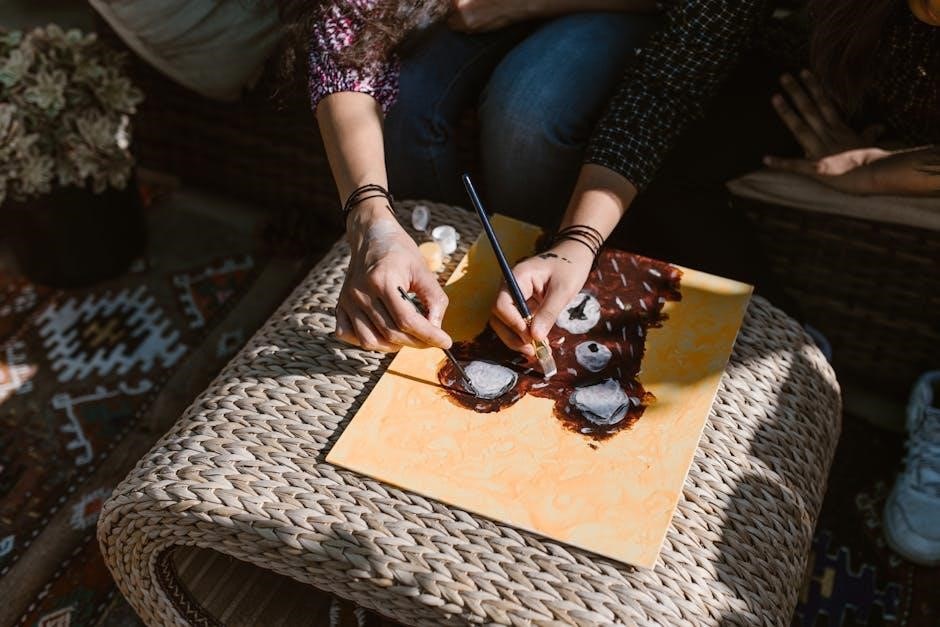
Additional Information
Reality Through the Arts offers supplementary resources, including related books and online forums, to enhance learning and engagement with the humanities.
10.1 Related Books and Resources
Several supplementary materials complement Reality Through the Arts, including online forums, study guides, and related textbooks. Resources like MySearchLab offer interactive tools for deeper engagement. Additional books on art history and criticism provide expanded perspectives. Digital platforms host discussions and updates, ensuring access to the latest educational content. These resources cater to diverse learning needs, supporting both students and educators effectively.
10.2 Updates and Future Editions
Reality Through the Arts is continually updated to reflect evolving artistic trends and educational needs. The 8th edition introduces enhanced digital features and expanded coverage of contemporary arts. Future editions aim to incorporate more interactive learning tools and diverse global perspectives. Updates may include new chapters on emerging art forms and technologies. Subscribers can expect regular notifications about upcoming releases and improvements, ensuring access to the most current educational resources.

10.3 Community Discussions and Forums
Community discussions and forums dedicated to Reality Through the Arts provide vibrant spaces for educators and students to share insights and strategies. These platforms foster collaboration, offering resources and tips for effective teaching and learning. Engaging in these communities enhances understanding of the humanities and encourages innovative educational approaches. Active participation in forums also helps users stay updated on new developments and connect with peers who value the arts and education.